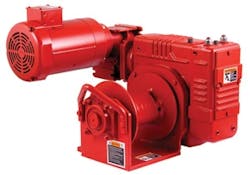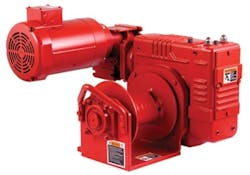Nutrient removal in the Gulf region: Sustainable wastewater treatment technologies for meeting future regulations
NEW ORLEANS, LA, Oct. 4, 2010 -- Excess nitrogen and phosphorus runoff from farm fertilizers, sewage and industrial pollutants can adversely affect plant and animal growth, as well as human development. Thus, nutrient pollution of major watersheds has become an increasing concern of government agencies, public utilities and private industries. The "dead zone" in the Northern Gulf of Mexico is an example of nutrient-related impairment. Technologies that can cost-effectively remove nutrients from wastewater, while saving energy, are an important part in helping to solve this problem. Siemens Water Technologies is at the forefront in offering sustainable solutions.
A "dead zone" or "hypoxia" is an area where oxygen levels fall below 2.0 parts per million (ppm). The lack of oxygen suffocates most marine life, and as little as 1 pound of phosphorus can result in 500 pounds of algae. When algae dies off, it consumes the oxygen. In August 2010, the Louisiana Universities Marine Consortium reported that the Gulf of Mexico dead zone currently extends for 7,722 square miles, the fifth largest on record. These scientists also reported that the eastern portion of the dead zone overlaps with the regional significantly impacted by the Deepwater Horizon oil spill; however, they think it unlikely that the oil spill had a significant impact on the size of the zone.
The National Oceanic and Atmospheric Administration (NOAA) Center for Sponsored Coastal Ocean Research reported that a large and persistent area of severely degraded habitat is caused by excessive nutrient pollution draining into the Gulf. Additional threats to the Gulf's economically important living resources, such as the recent oil spill, only increase the urgency to implement nutrient reduction efforts that will help to restore critically needed habitat.1
While agriculture is a major contributor of hypoxia, sewage treatment plants and industries also contribute to the nitrogen and phosphorus load to water bodies -- some estimate by as much as 30%. Certain regions of the country have implemented their own nutrient discharge regulations to reduce the levels of nitrogen and phosphorus discharged from wastewater treatment facilities. The Chesapeake Bay Initiative and the 2000 Chesapeake Bay Agreement proposed legislation that required all new treatment facilities and other existing point source dischargers in the affected states to comply with stricter nutrient removal standards by 2010. The Mississippi River/Gulf of Mexico Nutrient Management Task Force supports the goal of reducing the size of the hypoxic zone to less than 1,900 square miles, which will require substantial reductions in nitrogen and phosphorus reaching the gulf.
The EPA has created a national nutrient criteria strategy that will require states to adopt numeric nutrient standards. Thus, many U.S. utilities will need to achieve effluent nitrogen and phosphorus concentrations that challenge their current water treatment capabilities.
Treatment Technologies
In anticipation of possible future regulations for reducing nitrogen and phosphorus at all new municipal wastewater treatment plants whose discharge eventually feeds into the Mississippi River Basin, some plants have begun to design nutrient removal into their new plants or have upgraded existing plants to reduce nutrient levels. The state of Kansas' Nutrient Reduction Plan reported that reducing 30% of the mass of total nitrogen (TN) delivered to the Gulf could result in as much as 50% less dissolved oxygen depletion in the Northern Gulf.
While many wastewater treatment plants are capable of biological nutrient removal (BNR), quickly changing regulations in some areas are requiring enhanced nutrient removal (ENR) to meet nitrogen and phosphorus discharge limits (phosphorus levels less than 0.3 mg/l and total nitrogen of 3.0 mg/l or less). But, whatever future nutrient removal limits wastewater plants may require, Siemens Water Technologies is continuing to develop and provide innovative technologies.
For example, the energy efficient VertiCel BNR system combines mechanical aeration in the aerated anoxic tank with diffused aeration in the aerobic zones, thereby optimizing process aeration efficiency. A key element of the system is its use of aerated anoxic technology, a technology that has been successful in hundreds of installations. The VertiCel system incorporates the advanced SmartBNR PLC-based instrumentation/control package that cuts energy and enhances system reliability. Another way to improve nutrient removal is with continuous backwash filters (CBFs). CBFs are used as an attached growth process for the biological conversion of nitrogen and as polishing units for phosphorus removal. Because CBFs are an add-on tertiary process, the plant can increase capacity without affecting the existing infrastructure.
Existing wastewater plants can be retrofitted with newer, technologically advanced biological process solutions such as the Orbal Multichannel Oxidation Ditch, Membrane Biological Reactor (MBR), Integrated Fixed Film Activated Sludge or the OMNIPAC Sequencing Batch Reactor. All of these systems can be designed for medium to larger plants (0.5 MGD or higher) or as package systems for smaller flow rates (less than 0.5 MGD). Advanced filtration systems like the NxClear Denitrification Filters or the CenTROL filter system with denitrification enhancement (for flow rates of 10 MGD or higher) can be added for polishing the wastewater.
Customer Solutions
When a number of wastewater treatment plants were damaged from Hurricane Katrina, the Mississippi Engineering Group (MSEG) completed preliminary design of the projects that received funding to relocate the plants to higher ground. The designed plants ranged from 0.75 to 2.4 MGD, and many of them incorporate the Orbal Multichannel Oxidation Ditch, since the technology is flexible enough to remove nitrogen without major modifications in the future. Eight of these are in Hancock, Harrison and Stone Counties in Mississippi.
"The engineers knew a nitrogen limit was coming, but they weren't sure when the limits would come or how low they would be," said Tom Larsen, Technical Sales Manager for Siemens Water Technologies. "The idea was to design the plants with the option of total nitrogen removal with the Orbal system to 5.0 mg/l or less, and then add tertiary filtration later on if the limits turned out to be tighter." These plants are in various stages of construction, and the first ones are anticipated to start up in late 2010.
The Orbal Multichannel Oxidation Ditch can be easily upgraded for future stringent total nitrogen (TN) effluent requirements, either by adding a mixed liquor suspended solids recycle pump within the existing channels (TN of 5.0 mg/l or less) or by adding on an additional anoxic zone (TN of 3.0 mg/l or less). Typical Orbal systems can achieve effluent total phosphorus values of 0.3-0.5 mg/l without chemical addition; however, as with any biological phosphorus removal system, chemical backup/polishing may be required. The Orbal system requires less power to operate than any other oxidation ditch system, and when coupled with SmartBNR controls, the process consumes an average of 30-40% less power when compared with conventional systems.
For further information and perspectives on this topic, please refer to the following links:
http://www.scientificcomputing.com/news-DS-Dead-Zone-Changes-in-the-Gulf-081110.aspx
http://ecocentric.blogs.time.com/2010/08/02/oil-spill-whats-going-on-under-the-gulf/
(1) "Oil Spill: Dead Zones and Dispersants," ecocentric.blogs.time.com, August 2, 2010.CenTROL, NxClear, OMNIPAC, Orbal, SmartBNR and VertiCel are trademarks of Siemens Water Technologies, its subsidiaries or its affiliates in some countries.
Further information about solutions for water treatment is available at: http://www.siemens.com/water
The Siemens Industry Sector (Erlangen, Germany) is the worldwide leading supplier of environmentally friendly production, transportation, building and lighting technologies. With integrated automation technologies and comprehensive industry-specific solutions, Siemens increases the productivity, efficiency and flexibility of its customers in the fields of industry and infrastructure. The Sector consists of six divisions: Building Technologies, Drive Technologies, Industry Automation, Industry Solutions, Mobility und Osram. With around 207,000 employees worldwide (September 30), Siemens Industry achieved in fiscal year 2009 total sales of approximately €35 billion. http://www.siemens.com/industry
The Siemens Industry Solutions Division (Erlangen, Germany) is one of the world's leading solution and service providers for industrial and infrastructure facilities comprising the business activities of Siemens VAI Metals Technologies, Water Technologies and Industrial Technologies. Activities include engineering and installation, operation and service for the entire life cycle. A wide-ranging portfolio of environmental solutions helps industrial companies to use energy, water and equipment efficiently, reduce emissions and comply with environmental guidelines. With around 31,000 employees worldwide (September 30), Siemens Industry Solutions posted sales of €6.8 billion in fiscal year 2009.
Further information and downloads at: http://www.siemens.com/industry-solutions
###

